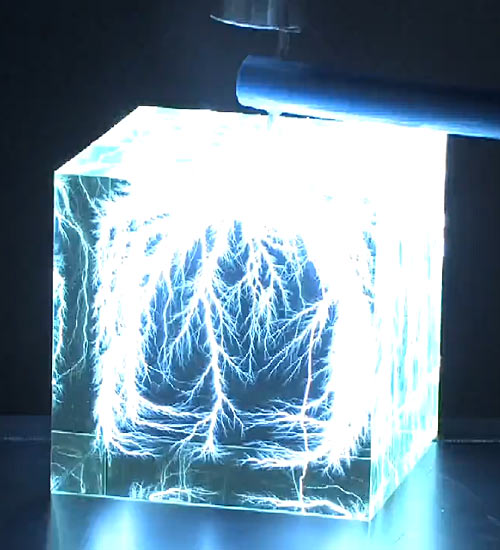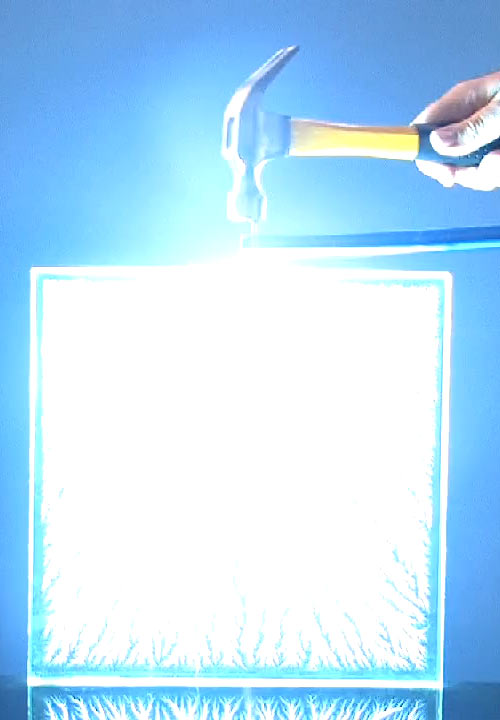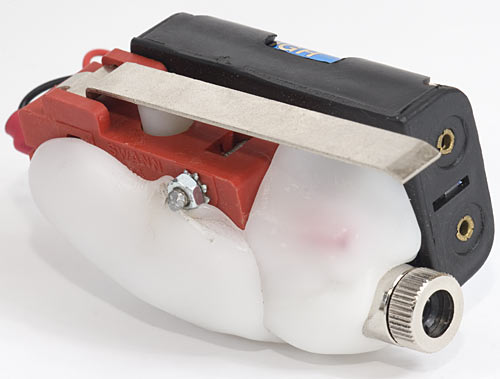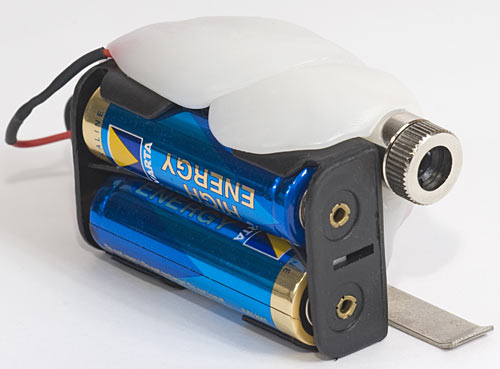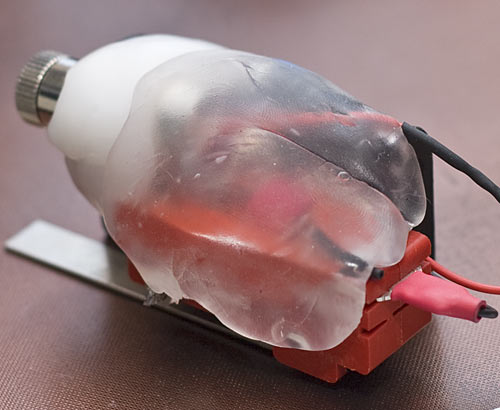Imagine my delight at receiving the following:
From: "Clink Admin" >admin@clink.com.au<
To: dan@dansdata.com
Subject: A review?
Date: Sat, 21 Aug 2010 15:21:37 +1000Hi Dan,
I was wondering if you would do a review of something on my website, address in signature.
Not sure if anything on there is along the lines of stuff you would normally but think there may be a couple of items that fit in.Would love if you would do a review of my Vortex Analogue Interconnects, these have proven very popular cable.
http://clink.com.au/audio/stereo.htm (bottom of the page)
So would be great to get an independent and unbiased view of these.
Would only ask you to do a cable review though if you feel it is something that has an impact on audio quality.
If your of the school of thought that they have no impact then prefer not to have a review done as it would be very short, probably in the under 10 words variety of short.Gregory
Cinema Link, Sales
675 Elizabeth St
Waterloo NSW 2017
Ph: (02) 9698 4959
www.clink.com.au
[There was a bit more to this e-mail; I've corresponded with Gregory previously. He asked if I'd like to check out one of his HDMI switches, which I don't actually have the equipment to test but which seem quite handy; by linking to them and other pages of his without so much as a nofollow, I hereby repay Greg for what's going to happen to him in the rest of this post!]
My answer:
Yeeeahhh... you haven't read much of my site, have you :-)?
(Or this blog, for that matter.)
It's the "school of thought" part that I think is the problem. There's no need to separate people into pseudo-religious "schools of thought" over a question that can be settled by scientific means.
We know, with the same certainty that we know that the GPS system and personal computers work and for many of the same reasons, that none of the conventionally-measurable electrical characteristics of analogue cables have any effect on the sound. Well, except in particularly pathological cases where some truly bizarre cable architecture adds substantial reactance or something, in which case it only makes a system sound better if there was something wrong with the system in the first place. Like, your speakers have 14 drivers wired in parallel and thus have far too little impedance for your amp to happily drive, so hooking them up via carbon spark-plug leads or something that add a lot of resistance un-ruins the sound.
(See also those occasional fringe-audiophile products that are actually quantifiably bad, like this amplifier, plus a veritable cavalcade of dreadful valve amplifiers. All of which have users who insist that they sound GREAT.)
[Oh - in case you're wondering, yes, Cinema Link have fancy digital cables, too...]
The analogue-cables-sound-different response to the electrical-engineering argument is to say that DC-to-daylight frequency and phase analysis just doesn't measure some special something that they know when they hear it, science doesn't know everything, et cetera.
But a vanishingly small percentage of the people who say this ever bother to do even a simple single-blind test to see if they, themselves, can actually hear any difference between their special cables and lamp cord. Such tests really are not difficult to do at all - all you need is a trustworthy friend to flip coins, swap cables and make notes, some very elementary experimental design, and a spare afternoon - but they're amazingly unpopular. Un-blinded tests remain immensely popular, but it's trivially demonstrable that those don't work.
This is my favourite recent example, but there are countless others, covering the entire breadth of live and recorded sound. Vision and hearing are subject to an immense amount of processing by the brain before consciousness gets to perceive them.
(Another favourite of mine: Famous concert violinists are often certain that they can tell the difference between a priceless antique violin - especially if it's their Stradivarius or whatever - and a high-quality modern instrument. But when you do a blinded test, the results, once again, drop to chance levels! They can probably pick the Strad blindfolded if they're actually holding it in their hands, but that's all.)
Some audiophiles go so far as to say that no matter how perfect the experiment design, with no possibly-sound-colouring ABX switchboxes or skull-resonance-changing blindfolds involved, these sorts of differences just can't be detected by science, in the same way that God will never permit Himself to be detected by scientific investigation. Exactly how these people figured out that the new cables sounded better is, in these cases, something of a mystery.
(The people who insist that cables need "burn-in time" have a particularly neat way out of blinded tests; they can just assert that the... phlogiston, or whatever... leaks out of burned-in cables when you disconnect them. But I'd be willing to bet quite a lot of money that swapping out their expensive burned-in wires for hidden $2 interconnects and bell-wire speaker cables would pass entirely unnoticed.)
I'm inclined to go easy on people who buy fancy cables and reckon they sound good. We all fool ourselves frequently, which is why science is so important, but a fooling of oneself that leads to essentially harmless happiness is not a major crime.
But I really must insist that people who're in the business of making and selling fancy cables have no right to make any claims about the "sound" of their products, if they haven't at least hired a few first-year electrical-engineering students to spend a day doing an independent test.
If, when blinded tests were done, they at least reasonably frequently showed that fancy cables sounded better, then it'd be no big deal to sell such products without doing the tests yourself. But what we instead keep seeing is that in a blinded test people can't tell the difference between Monster Cables and (literal) coat-hanger wire. (Monster products may be overpriced and often sold in a blatantly dishonest way, but surely they ought to beat coat-hangers!)
Given this, I cannot help but consider the basic rationale for products such as your cables as being as unproven as the notion that a chiropractor can cure diabetes, or that all poor people are poor because they do not adequately desire wealth.
It's not the Middle Ages any more. We know where lightning comes from, we have machines that routinely fly hundreds of people thousands of miles in (relative) comfort, and our doctors have figured out that it's a good idea to wash your hands before operating. Every day, people in First World nations are surrounded by proof of the effectiveness of scientific inquiry that's so bright, loud and ubiquitous that we, apparently, have developed the ability to tune it out when it suits us. But that doesn't make it a good idea to do so.
You're not a quack, and I don't think you're a scam artist, either. Your cables aren't outrageously expensive relative to the price of the components and assembly - they might as well be free, when compared with the truly out-there cable vendors. And you don't sell $1000 power cables, either (...do you? Tell me you don't!). But this doesn't mean that sending samples of new cables to your existing customers and using their testimonials in advertising is an acceptable way of proving your claims.
If testimonials were a good way of proving the scientifically dubious, I'd be torn between devoting all my time and money to Transcendental Meditation in order to develop the ability to fly and walk through walls, or devoting just as much time and probably even more money to Scientology in order to develop the ability to control space and time.
At the end of the day, I suppose you do end up with "schools of thought", but the members of those schools are not "people who reckon special cables sound better" and "people who don't" (or "people who reckon Uri Geller has paranormal powers" and "people who don't"; I'm sure you can provide many of your own examples). They're "people who believe this question is amenable to rational investigation" and "people who don't care".
You're allowed to not care. Everyone's entitled to his opinion. But nobody's entitled to be taken seriously.
Gregory replied:
Thanks for taking the time to reply in depth, and for the informative links.
I've taken a little more time this time to read some of the pieces on your site and understand a little more of your thoughts on audio cables.
So I'll take that as no, or at least I'll take it as something that would be detrimental to my business health.
To which I replied:
...and you are thus acknowledging that if you made an attempt to figure out if your fancy cables worked, you'd find that they didn't? :-)
[Greg's, regrettably, not yet found time to reply to that.]
As I said, for hi-fi this really doesn't make a whole lot of difference either way. Even the really wacky Shun Mook or Peter Belt (...or just about anything else that 6moons thinks is fantastic...) sort of hi-fi cultism doesn't really hurt anyone - certainly not by the standards of the usual kind of cult. Some nut out there has probably bought speaker wire instead of nutritious food for his children, but that is hardly a probable situation.
That doesn't mean that the same patterns observable in truly harmful things like crazy cults and medical quackery aren't valid when you see them in other contexts, though. One I find particularly common, which is very much on show in the audiophile world, is the peculiar and inexplicable situation in which the better you investigate something - eliminating extra variables, reducing experimenter bias, reducing the ability of subjects to fool themselves - the less effect that something turns out to have.
When "lousy test" shows "huge effect" and "better test" shows "medium effect" and "further-improved test" shows "not much effect at all", it may be that the latter two tests were false negatives.
But it usually does actually mean that "perfect test" would show "zero effect".
